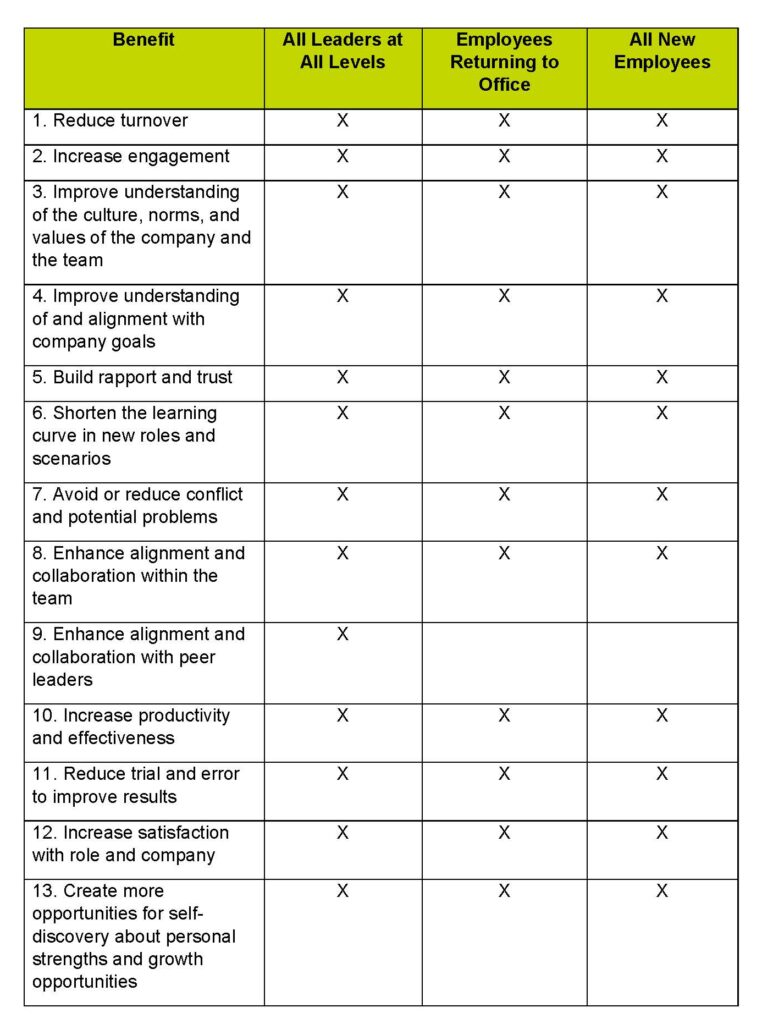Why Is Assimilation Important in the Workplace?

You’re familiar with the idea of initiating an assimilation strategy for newly hired C-suite leaders, to help them get up to speed, gel with the company, and make an impact. But did you know expanding your assimilation strategy to other employee groups can increase the benefits to your business exponentially?
In today’s complex environment in which recruiting is more challenging than ever, holding on to employees at every level is critical to your success — and that’s one key benefit of expanding your assimilation strategy beyond your top execs.
So who are the top 3 employee groups who benefit from an expanded assimilation strategy? And what benefits to your business can you expect? Let’s find out!
What is an assimilation strategy?
Before we jump into the employee groups and the benefits of an expanded assimilation strategy, let’s first take a quick look what an assimilation strategy is so we’re on common ground. Simply stated, an assimilation strategy is an intentional process that helps an employee understand their role and how it relates to operational goals while ensuring they have the tools, resources, and relationships to be successful in that role.
Typically a 6- to 12-month process, an assimilation strategy includes such objectives as reviewing company and team policy and procedures, establishing strong cross-functional relationships, understanding and engaging in company culture, building rapport and trust between individuals and within teams, defining and improving communication and interaction among individuals and teams, and creating an open dialogue to identify and resolve potential challenges before they become problematic.
In the past, assimilation strategies have been most commonly initiated among C-suite execs. But today’s forward-thinking businesses know expanding that strategy to other employee groups can be the game-changer they need to overcome today’s human capital challenges, transform their culture, and amp up their overall effectiveness.
top 3 employee groups who benefit from An expanded assimilation strategy
What does today’s employee landscape mean for your business? Unfortunately the stats aren’t encouraging.
According toForbes: 30 percent of new-hires leave within 90 days, and nearly 40 percent don’t last a year. Among new-hires and legacy employees, when they don’t feel supported, they’re 3 times more likely to explore other options. High turnover costs — 33 percent of an employee’s salary — aren’t the only risk. Productivity takes a hit when employees leave. And even when you hold on to employees, if they’re not engaged, your business suffers. Disengaged employees have a 15 percent lower profitability.
An expanded assimilation strategy is the answer to improving engagement and retention across your business.
For maximum benefit, expand your assimilation strategy to these 3 employee groups:
1. All Leaders at all levels
Yes, all leaders. From new-hires, to first-time managers who have been promoted from within, and even to seasoned C-suite executives. All leaders will benefit from the improved communication and collaboration, enhanced connection to the company’s culture and values, and stronger alignment with the company’s goals, all of which results from an assimilation strategy. This is especially important for internally promoted leaders, considering Forbes reports nearly 25 percent of companies don’t have any onboarding strategy for this group to help set them up for success in their new roles.
2. Employees Returning to Office
Whether employees are returning to the office after working from home, or they’re transitioning to a hybrid arrangement, new scenarios will bring change, and smart businesses address change head on. Employee dynamics, workflows, teams, and even company culture must be adapted, understood, and, hopefully, embraced. An assimilation strategy will help these employees better acclimate to changes. In fact, Fast Company reports 9 in 10 companies will mandate some form of return-to-office policy by the end of 2024 — so chances are return-to-work policies are in your company’s future, if they haven’t already been planned or initiated.
3. All new employees
To beat the turnover odds, successful onboarding is essential — at all levels, not just for leadership positions. An assimilation strategy goes deeper to help you ensure new-hires are supported, engaged, and empowered to more quickly make meaningful contributions to the business. According to Forbes, comprehensive onboarding makes employees 33 percent more engaged. Positive onboarding also makes employees 18 times more committed to the company and 38 percent more effective. Because an assimilation strategy goes beyond onboarding, it takes these impacts to the next level.
13 BENEFITS OF AN EXPANDED ASSIMILATION STRATEGY
We’ve touched on many of the benefits of an expanded assimilation strategy above, but to make the total picture even clearer we’ve collected a comprehensive list of the top 13 benefits of an expanded assimilation strategy all in one place. And we’ve gone one step further by connecting them to the employee groups who benefit from them.
So what’s the takeaway?
An expanded assimilation strategy including these 3 key employee groups will positively impact employee retention, productivity, and effectiveness — and, ultimately, your bottom line.
Even better, it’s never too late to get started.
Fahrenheit is here to help! To find out how our human capital experts can help you develop and implement an assimilation strategy for all key employee groups, contact us today. Our team of seasoned, C-level executives and consultants are here to help you find the straightest path forward.
ABOUT THE AUTHOR
 As an operationally focused strategic senior human resources professional, Melody Donovan-Hopkins has more than 17+ years of progressive experience in the information technology, healthcare data analytics, life sciences, and financial industries. She is a strategic human resources servant leader with business acumen managing the employee life cycle.
As an operationally focused strategic senior human resources professional, Melody Donovan-Hopkins has more than 17+ years of progressive experience in the information technology, healthcare data analytics, life sciences, and financial industries. She is a strategic human resources servant leader with business acumen managing the employee life cycle.